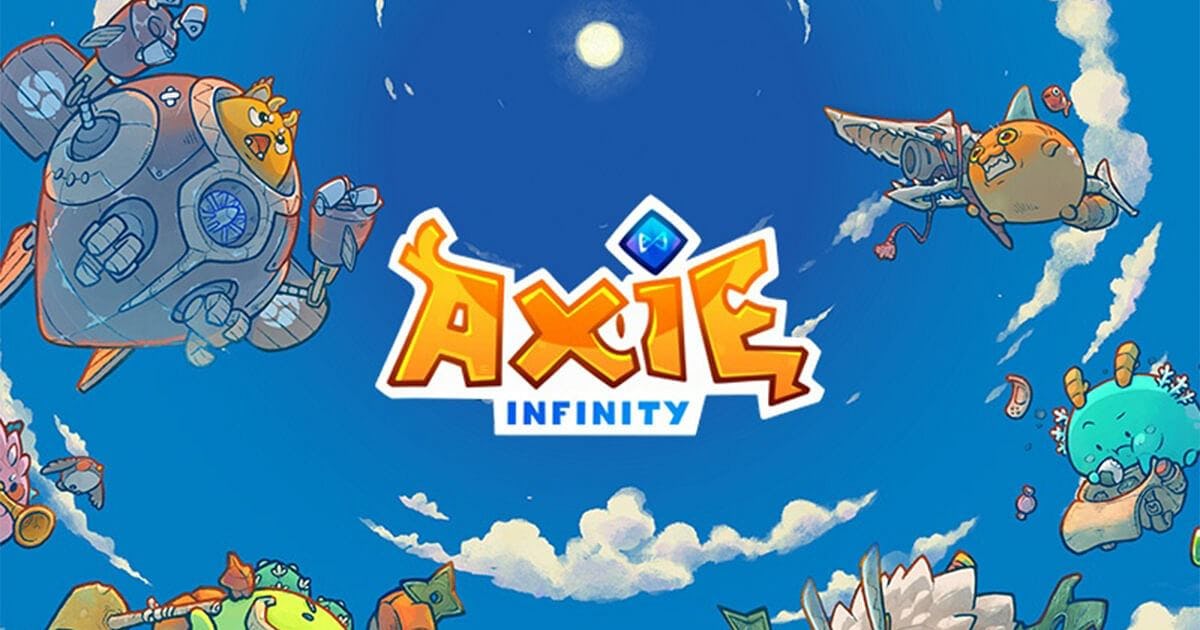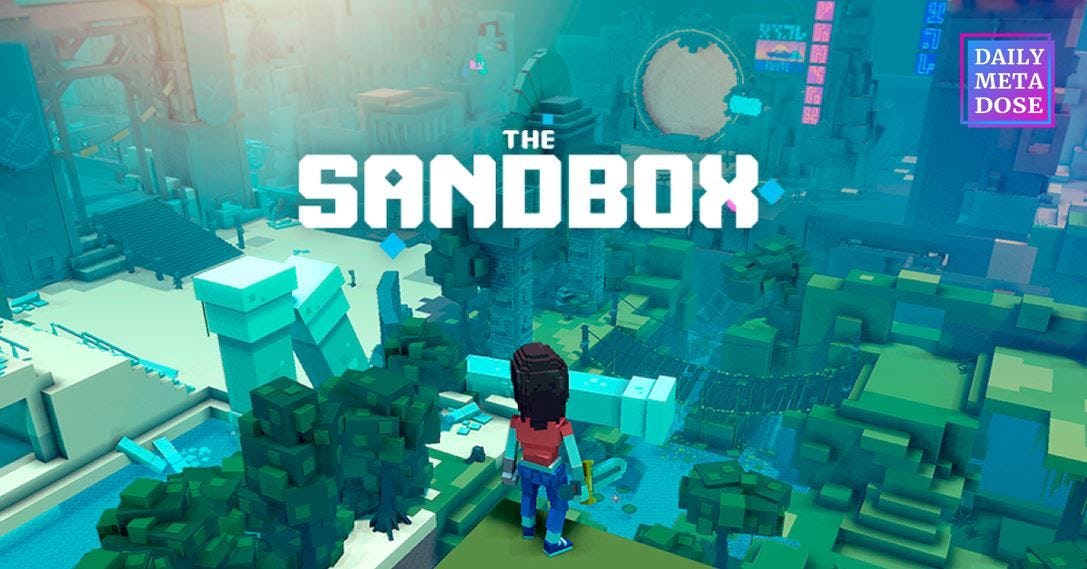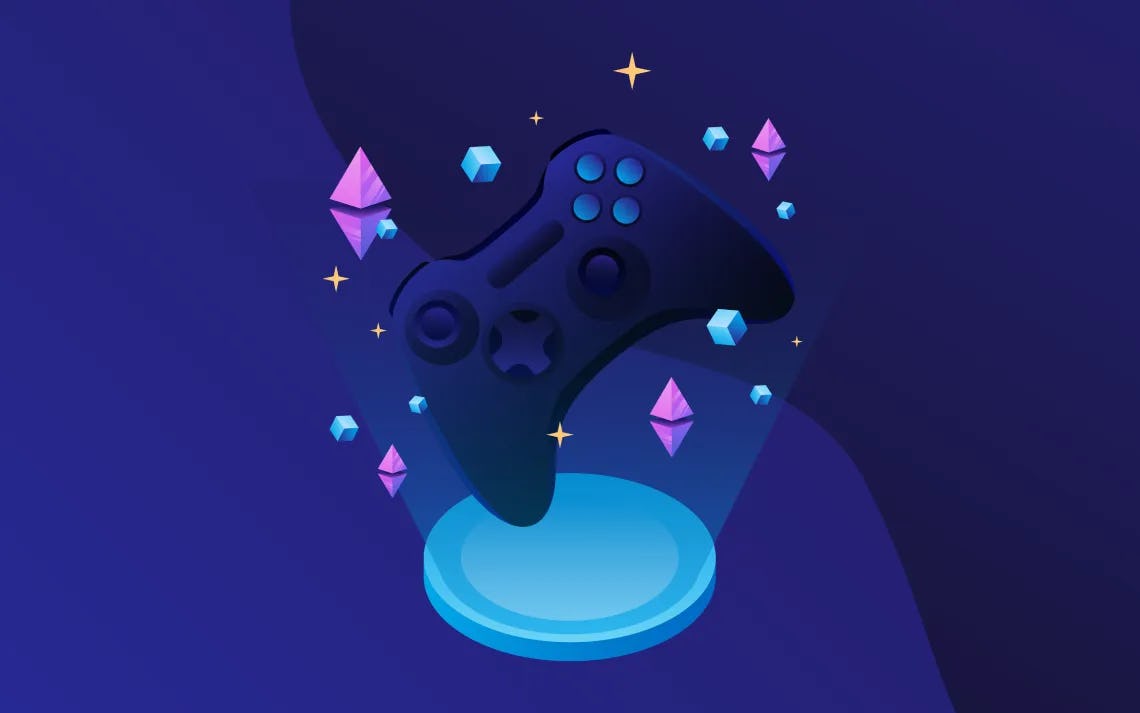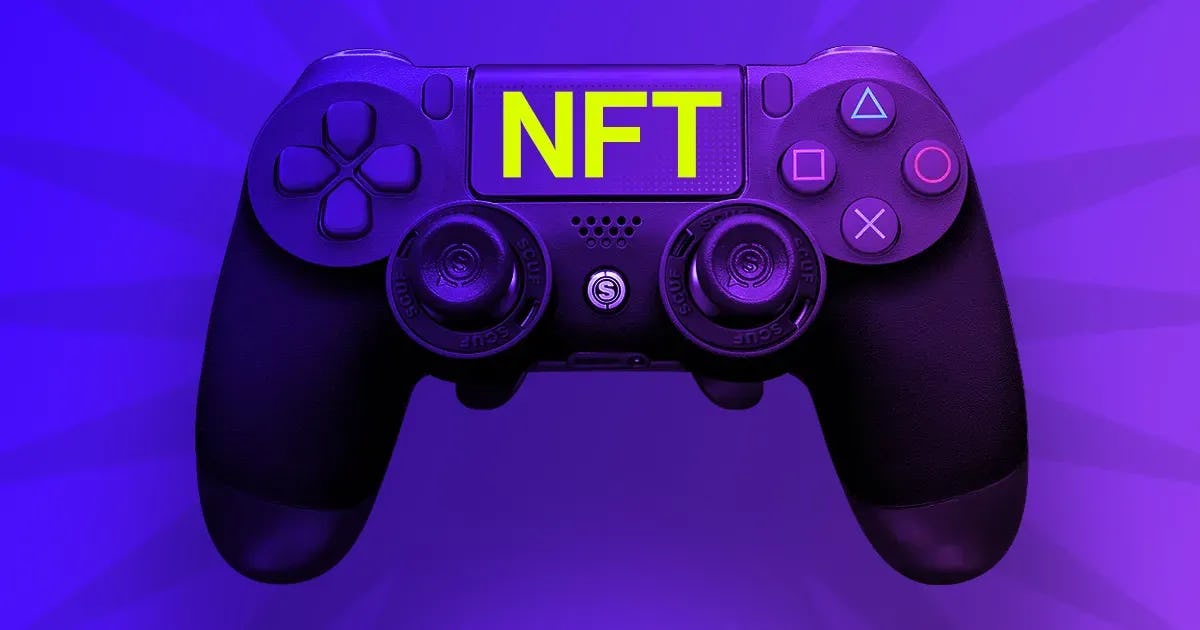Best Web3 Applications and Future Prospects
Part Three of our "Everything you need to know" series on web3. Explore its best applications, principles, and potential impact on the future of all our online experiences.

Eliza Crichton-Stuart
Head of Operations

In the ever-evolving landscape of digital innovation, web3 emerges as a beacon of decentralized possibilities, promising to revolutionize how we interact with the internet. As blockchain technology continues to mature, it has paved the way for a new generation of applications that prioritize user privacy, security, and autonomy.
In this article, we delve into the realm of web3, exploring some of the best applications currently making waves in the decentralized space. From decentralized finance (DeFi) platforms to non-fungible token (NFT) marketplaces and beyond, we uncover the innovative solutions driving the web3 movement forward, while also examining the promising future prospects that lie ahead for this transformative technology.

What is Web3?
Definition: Web3 is a new evolution of the Internet based on the principles of decentralization. Web3 combines the rich and interactive digital experiences that exist today with infrastructure that offers users ownership and cryptographic guarantees.
The emergence of web3 has garnered widespread attention from leaders in both traditional tech and the blockchain community, sparking discussions about its historical roots and future implications. Initially coined by Tim Berners-Lee during the dotcom era, "web 3.0" originally described an interconnected communication framework enabling machine-readable Internet data across various platforms — a concept synonymous with the Semantic Web.
Note: Throughout this article, "web3" will be used distinctively from "web 3.0," which typically refers to Berners-Lee's Semantic Web concept.
In 2014, Ethereum Co-founder Gavin Wood repurposed the term in his blog post "DApps: What Web 3.0 Looks Like," emphasizing blockchain's potential to establish a trustless interaction system through protocols like consensus engines and cryptography.
Today, web3 remains a focal point of debate among tech giants and blockchain pioneers, who grapple with its foundational principles and effects on future trust models. You can read more about the history, origins, principles, and potential impact on the future of all our online experiences in this article here.

Best Web3 Applications
Web3 revolutionizes the Internet by merging decentralization and interactivity, facilitating direct user interactions devoid of intermediaries. Through decentralized applications (dApps), users access permissionless financial tools, engage in peer-to-peer cryptocurrency trading, receive parametric insurance payouts, transact in verifiable digital art via NFTs, participate in value-generating games, and various other activities without central oversight.
The Core Elements of Web3
Blockchains, Cryptocurrency, Smart Contracts, and Oracles
Advocates of web3 aim to establish a fairer, more transparent Internet environment, enabling direct interactions and transactions. Presently, web3 applications harness three foundational technologies — blockchains, smart contracts, and decentralized oracle networks — to redefine sectors like real estate, education, finance, gaming, and healthcare, with potentially transformative impacts across various domains.
The technologies underpinning web3 empower individuals to engage in financial protocols, ushering in unprecedented access, security, and transparency in what is widely recognized as decentralized finance (DeFi).
In contrast to traditional financial services, DeFi protocols utilize blockchain's decentralized infrastructure and oracle networks' secure inputs to facilitate direct peer-to-peer transactions in transparent, tamper-proof on-chain markets.

Decentralized Finance
Notably, decentralized money markets like Aave, bolstered by Chainlink oracles, operate in a non-custodial manner, facilitating peer-to-peer lending and borrowing, and currently securing over $12 billion in smart contract value.
These markets play a pivotal role in fostering a robust economy by decentralizing control, implementing predefined smart contract logic, and mitigating risks associated with single points of failure and fractional reserve practices, thereby enhancing economic access and resilience.
A notable innovation within DeFi is its composable architecture, granting developers the ability to integrate open-source protocols to create advanced financial instruments. These include no-loss savings games utilizing overcollateralized loan protocols, decentralized stablecoins, and interest-bearing tokens that mobilize idle capital and enhance liquidity.
Although the groundbreaking financial applications of DeFi presently dominate discussions surrounding web3, it's crucial to recognize that the web3 model transcends financial transactions. It encompasses every facet of the Internet, spanning entertainment, social media, and browser software, promising comprehensive transformation and innovation.

GameFi vs DeFi
GameFi, short for "game finance," is a gaming model in which players earn rewards with real-world value. Sometimes, these games require players to buy in-game NFTs or tokens to engage in gameplay. However, many GameFi games are free to play.
These projects rely on in-game transactions with pay-to-win elements that generate revenue. For example, the Winter Wonderland set that was released in December 2022 for the Immutable (IMX) web3 game Gods Unchained contained several powerful cards that would make it easier for players to beat their opponents. People were incentivized to buy these new cards to help them win.
DeFi, short for "decentralized finance," is a technology-focused collection of financial instruments that do not rely on centralized intermediaries. DeFi platforms let people let people engage in activities like yield farming, lending and borrowing, and buying and selling cryptocurrencies, NFTs, derivatives, and more using DLT.

Key Features of GameFi
- DLT: GameFi projects use cryptocurrency wallets to store game assets and distributed ledgers to track those assets as they move from the developer's wallet to a player's wallet (or from one player to another).
- Smart contracts: When a player earns cryptocurrency or NFTs, smart contracts automatically reward them.
- NFTs: Often, in-game items or characters are minted as NFTs. These in-game tokens allow players to own and trade their game assets.
- Play-to-earn model: Most blockchain games feature a play-to-earn model, letting players earn money by playing games.
- Passive income: Some GameFi games let players stake their tokens or NFTs to earn passive income. Others let players earn weekly rewards based on their in-game rankings.

How GameFi Works
NFT games aren't actually stored on the blockchain. Instead, traditional gaming technology is used for gameplay elements. Players can connect their crypto wallets to these games to interact with the blockchain.
Suppose you're playing a GameFi RPG with a medieval theme and want to use a new armor NFT you earned. In this case, the game would read the contents of your wallet, identify the tokens that interact with the game, and let you choose between the corresponding in-game items.

The actual characters, armor, and other in-game assets are stored in the gaming software but can only be "unlocked" if the player's crypto wallet contains the corresponding token.
Often, when players earn cryptocurrency or NFTs, the game interacts with a smart contract that sends the assets to the players' wallets. In other cases, players earn off-chain assets similar to those in traditional games. They must mint these assets to turn them into NFTs.
Popular GameFi Platforms
GameFi.org lets you look through thousands of blockchain-based games. This site ranks these games based on active users, sales, and user growth.
The Sandbox is a popular metaverse game that lets players design gaming assets to be sold to others. People can buy land and develop their own games or virtual experiences using NFT assets made by other players.
Alien Worlds is another popular GameFi game that lets players travel the universe looking for planets to mine. As they upgrade their equipment, they can mine more minerals, which they can trade for cryptocurrency.

Benefits of GameFi
Now that we know more about GameFi, let's look at why people are drawn to it.
Increased Engagement and Interaction
Players are incentivized to spend time every day with blockchain gaming because they can increase their rewards if they do. As players advance through game levels or earn new equipment, their earning potential grows, increasing the likelihood they'll stick to playing one game for long periods.
According to Pierre-Edouard Planche, partner at Griffin Gaming Partners, "gamers now have skin in the game and own a piece of the ecosystem, and as a result, they spend more time and money, which equals increased engagement and monetization."
Enhanced User Control
The GameFi ecosystem lets players take part in the creative direction of their projects. GameFi projects often have governance tokens that players can use to vote on important decisions that impact their favorite games.
Potential for Financial Gain
The play-to-earn gaming ecosystem lets players own and monetize their in-game items. In contrast, the traditional gaming industry often restricts players from selling the items they earn or buy. For example, in 2018, Pokemon Go's top player was suspended for selling Pokemon to other players.
Pokemon Go isn't the only game restricting players from monetizing their items. Popular games like Fortnite have sections in their terms of service prohibiting players from selling their items or accounts. Similarly, game developers like Epic Games explicitly state that players do not own their accounts or items.
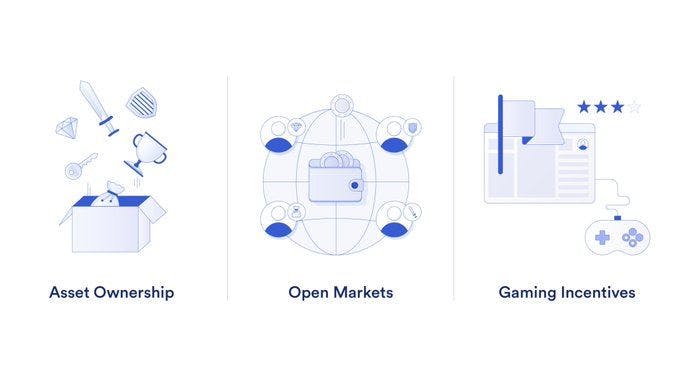
GameFi Growth
GameFi continues to rise in popularity, with over 5 million unique active wallets engaging with these play-to-earn games. Still, GameFi developers must overcome various issues before this ecosystem reaches the size of the traditional gaming industry. GameFi games store large sums of digital assets in crypto wallets, making them prime targets for hacks and exploits. Additionally, transaction costs and speeds can detract from peoples' gaming experience.
Despite GameFi's challenges, its market value is expected to reach $8.9 billion by 2028. As of April 2023, there were around 2,453 GameFi protocols across all chains, with more to come. Popular brands like Starbucks are building GameFi games to reward their customers for engaging with their brands. In the future, we'll likely see the GameFi ecosystem integrate with more brands and industries.
NFTs, Gaming, and the Metaverse
NFTs, blockchain gaming, and the metaverse are emerging as significant components within the web3 ecosystem. NFTs facilitate the authentication of digital asset ownership, imbuing digital goods with a level of uniqueness akin to real-world items. This differentiation allows digital items to possess distinct identities, similar to how individual books are uniquely identified by their specific markings and signs of wear and tear, even if they share identical appearances.
These developments hold profound implications for digital art, metaverse applications, and gaming. Presently, projects like Bored Ape Yacht Club (BAYC) are driving the adoption of NFTs and digital art, while blockchain games such as Axie Infinity are leading a transformative shift in gaming economics for players.
At the core of this transformative landscape are blockchains serving as the foundational settlement layer, NFT smart contracts facilitating ownership verification of digital assets, and decentralized oracles providing essential services like verifiable randomness, smart contract automation, off-chain data access, and more.

Future of Web3?
In a recent presentation on the Future of Chainlink, Sergey Nazarov, Co-founder of Chainlink, highlighted the burgeoning megatrends within the web3 ecosystem that have recently gained significant traction in the mainstream.
Nazarov emphasized the profound impact of cryptographic guarantees in the web3 realm, noting that these guarantees are manifesting in a diverse array of applications. These applications include DeFi, NFTs, and tokenized ownership, which represent the initial forays of cryptographic guarantees into the day-to-day operations of individuals and industries alike.
Web3, encapsulating a revamped Internet experience driven by decentralized technologies, is already reshaping our online interactions. It influences everything from financial investments and transactions to gaming and artistic expression. Across the globe, an increasing number of users and institutions are recognizing the potency of zero-trust interactions and agreements backed by cryptography.
While still in its nascent stages, web3 holds the potential to actualize the fundamental ideals of transparency, reliability, and efficiency that underpinned the Internet's inception. Sergey Nazarov pointed out that as web3 approaches the speed, efficiency, and cost-effectiveness of web systems, it offers a unique guarantee: trust minimization through cryptographic assurances—an assurance that traditional Web 2.0 systems cannot provide.

Final Thoughts
The emergence of web3 and its associated technologies hold profound implications for the gaming industry. With decentralized technologies such as NFTs, blockchain gaming, and the metaverse gaining prominence, gamers are experiencing a paradigm shift in how they engage with and perceive digital entertainment.
Through NFTs, gamers can securely own and trade in-game assets, fostering a sense of true ownership and value within virtual worlds. Moreover, blockchain-based games like Axie Infinity are pioneering new economic models, where players can earn real income through gameplay.
As web3 continues to evolve, the gaming landscape stands poised for further disruption, promising a future where players have unprecedented control, ownership, and economic agency within virtual environments.
This article was inspired by an original blog post, you can read the original write-up here for more information.
updated:
April 8th 2024
posted:
April 7th 2024
